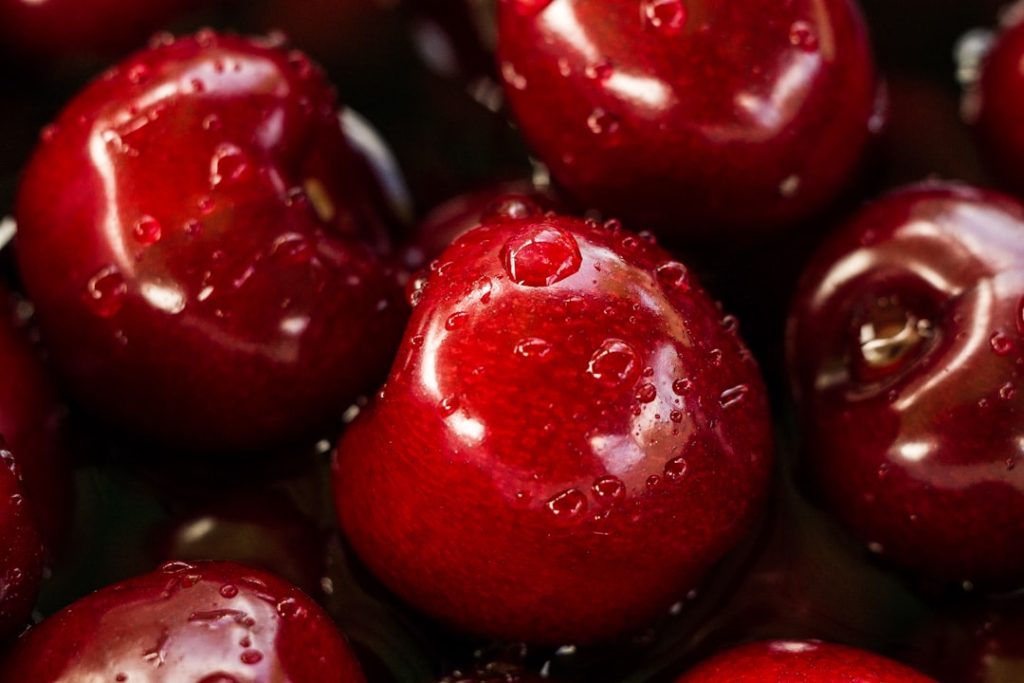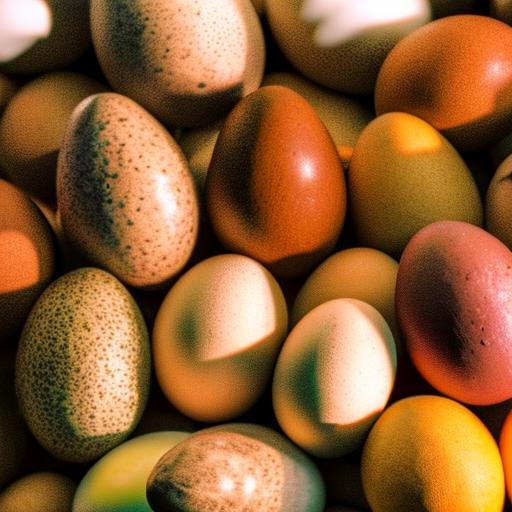Laying chicken breeds are specifically developed for their high egg production capacity. These breeds are favored by small-scale and backyard farmers seeking a consistent source of fresh eggs for personal consumption. Commercial egg production operations also utilize laying hens extensively.
When selecting laying chicken breeds, important considerations include egg production rates, temperament, and adaptability to various climates. A wide range of laying chicken breeds exists, each with distinct characteristics and traits. Understanding these differences is crucial for farmers to make informed decisions about which breeds best suit their requirements and preferences.
Laying chicken breeds exhibit diversity in size, color, and egg-laying capabilities. Some breeds are renowned for their high egg production, while others are valued for unique egg colors or resilience in challenging environments. Suitable breeds are available for both novice and experienced chicken farmers.
This article will examine popular laying chicken breeds, compare heritage and hybrid breeds, and offer guidance on selecting breeds based on specific needs. Additionally, it will explore the characteristics and traits of various laying chicken breeds, as well as the care and maintenance required to ensure their health and productivity. By the conclusion of this article, readers will have gained a comprehensive understanding of laying chicken breeds and be better equipped to make informed decisions regarding breed selection for their farms or homesteads.
Table of Contents
- 1 Popular Breeds for Egg Production
- 2 Considerations for Choosing Laying Chicken Breeds
- 3 Characteristics and Traits of Different Laying Chicken Breeds
- 4 Care and Maintenance of Laying Chicken Breeds
- 5 Conclusion and Recommendations for Laying Chicken Breeds
- 6 FAQs
- 6.1 What are the different breeds of laying chickens?
- 6.2 What are the characteristics of a good laying chicken breed?
- 6.3 Which laying chicken breed is known for high egg production?
- 6.4 What are some dual-purpose chicken breeds that are good for both egg production and meat?
- 6.5 What factors should be considered when choosing a laying chicken breed?
Key Takeaways
- Laying chicken breeds are specifically bred for their ability to produce eggs, making them a popular choice for backyard poultry enthusiasts.
- Popular breeds for egg production include the Rhode Island Red, Leghorn, and Australorp, known for their high egg-laying capabilities and hardiness.
- Heritage breeds are traditional, purebred chickens with historical significance, while hybrid breeds are the result of crossbreeding for specific traits such as egg production and disease resistance.
- When choosing laying chicken breeds, consider factors such as climate, space, and egg production goals to ensure the best fit for your needs.
- Different laying chicken breeds have unique characteristics and traits, such as feather color, temperament, and egg size, which can influence your choice of breed for your flock.
Popular Breeds for Egg Production
Popular Breeds for Egg Production
When it comes to egg production, some laying chicken breeds stand out from the rest. These breeds are known for their ability to consistently lay a high volume of eggs, making them popular choices for both small-scale and commercial egg production. Some of the most popular laying chicken breeds include the Rhode Island Red, Leghorn, Sussex, Plymouth Rock, and Australorp.
Unique Characteristics of Top Breeds
Each of these breeds has its own unique characteristics and traits that make them well-suited for egg production. The Rhode Island Red is a classic American breed known for its excellent egg-laying capabilities. These birds are hardy, adaptable, and known for their friendly disposition, making them a popular choice for backyard farmers.
Breed Profiles: Leghorn, Sussex, and Plymouth Rock
The Leghorn is another popular breed prized for its prolific egg production. These birds are known for their high energy levels and can be a bit flighty, but they make up for it with their impressive egg-laying abilities. The Sussex is a dual-purpose breed that excels in both meat and egg production. These birds are known for their gentle nature and adaptability to different climates, making them a versatile choice for small-scale farmers. The Plymouth Rock is a popular breed known for its docile temperament and consistent egg production. These birds are also valued for their ability to thrive in free-range environments.
The Australorp: A Top Choice for Egg Production
Finally, the Australorp is an Australian breed known for its exceptional egg-laying abilities and calm demeanor. These birds are well-suited for both backyard and commercial egg production operations.
When choosing laying chicken breeds, farmers have the option of selecting heritage breeds or hybrid breeds. Heritage breeds are traditional breeds that have been around for many years and are often prized for their historical significance, unique traits, and ability to thrive in free-range environments. These breeds are typically well-adapted to specific climates and are known for their ability to reproduce naturally.
On the other hand, hybrid breeds are the result of crossbreeding different chicken breeds to create birds with specific traits such as high egg production, disease resistance, or fast growth rates. Heritage breeds are often favored by farmers who prioritize sustainability, genetic diversity, and preserving traditional farming practices. These breeds are valued for their ability to forage for food, resist common diseases, and raise their own chicks without human intervention.
Examples of heritage laying chicken breeds include the Rhode Island Red, Plymouth Rock, Sussex, and Australorp. These breeds have been around for many years and have established themselves as reliable choices for small-scale egg production. Hybrid breeds, on the other hand, are popular among commercial egg producers who prioritize efficiency, uniformity, and specific production traits.
These breeds are often selected for their ability to lay a high volume of eggs, grow quickly, or resist certain diseases. Examples of hybrid laying chicken breeds include the ISA Brown, Hy-Line Brown, and Lohmann Brown. These breeds have been specifically bred for their egg-laying capabilities and are commonly used in large-scale egg production operations.
When choosing between heritage and hybrid laying chicken breeds, farmers should consider their specific goals, preferences, and farming practices. Heritage breeds may be better suited for those who prioritize sustainability and self-sufficiency, while hybrid breeds may be a better fit for those who prioritize efficiency and specific production traits.
Considerations for Choosing Laying Chicken Breeds

When choosing laying chicken breeds, there are several important considerations to keep in mind. Farmers should consider factors such as climate adaptability, egg production rates, temperament, space requirements, and availability of resources such as feed and water. It’s also important to consider whether you want to raise heritage breeds or hybrid breeds, as each type has its own unique characteristics and traits.
Climate adaptability is an important consideration when choosing laying chicken breeds. Some breeds are better suited for cold climates, while others thrive in hot and humid environments. Farmers should select breeds that can withstand the climate conditions in their specific region to ensure the health and well-being of their chickens.
Egg production rates vary among different laying chicken breeds. Some breeds are known for their prolific egg-laying abilities, while others may produce fewer eggs but of higher quality or unique colors. Farmers should consider their egg production goals when selecting breeds for their flocks.
Temperament is another important consideration when choosing laying chicken breeds. Some breeds are known for their docile nature and friendly disposition, making them well-suited for backyard farming and interaction with children. Other breeds may be more flighty or aggressive and require more space or specialized handling.
Space requirements should also be taken into account when choosing laying chicken breeds. Some breeds are more suited for free-range environments with ample space to roam and forage for food, while others may thrive in smaller confinement settings. Finally, farmers should consider the availability of resources such as feed and water when choosing laying chicken breeds.
Some breeds may have specific dietary requirements or be more susceptible to certain diseases, so it’s important to ensure that the necessary resources are readily available to meet the needs of the chosen breeds. By carefully considering these factors, farmers can make informed decisions about which laying chicken breeds will best suit their specific needs and preferences.
Characteristics and Traits of Different Laying Chicken Breeds
Laying chicken breeds come in a wide variety of sizes, colors, and temperaments, each with its own unique characteristics and traits. Understanding the differences between these breeds can help farmers make informed decisions about which ones will best suit their needs and preferences. The Rhode Island Red is a popular laying chicken breed known for its excellent egg-laying capabilities.
These birds are medium-sized with deep red feathers and are valued for their hardiness, adaptability to different climates, and friendly disposition. Rhode Island Reds are known to lay brown eggs consistently throughout the year and are a popular choice among small-scale farmers. The Leghorn is another popular laying chicken breed prized for its prolific egg production.
These birds are small to medium-sized with white feathers and are known for their high energy levels and flighty nature. Leghorns are excellent layers of white eggs and are commonly used in commercial egg production operations due to their efficiency and consistency. The Sussex is a dual-purpose breed that excels in both meat and egg production.
These birds come in a variety of colors including speckled, red, and light brown and are valued for their gentle nature, adaptability to different climates, and consistent egg production. Sussex chickens lay light brown eggs and are well-suited for free-range environments. The Plymouth Rock is a popular laying chicken breed known for its docile temperament and consistent egg production.
These birds are medium-sized with black-and-white striped feathers and are valued for their ability to thrive in free-range environments while consistently laying brown eggs throughout the year. The Australorp is an Australian breed known for its exceptional egg-laying abilities and calm demeanor. These birds are medium-sized with black feathers that have a greenish sheen in the sunlight and are valued for their adaptability to different climates as well as their consistent production of brown eggs.
Each of these laying chicken breeds has its own unique characteristics and traits that make them well-suited for specific farming practices and preferences.
Care and Maintenance of Laying Chicken Breeds
Proper care and maintenance are essential for keeping laying chicken breeds healthy and productive. Farmers should provide their chickens with a suitable living environment, balanced nutrition, regular health checks, and protection from predators and extreme weather conditions. A suitable living environment is essential for laying chicken breeds to thrive.
Farmers should provide adequate space for their chickens to move around freely, access to fresh air and natural light, comfortable nesting boxes for laying eggs, perches for roosting at night, and protection from extreme weather conditions such as heat, cold, wind, and rain. Balanced nutrition is crucial for maintaining the health and productivity of laying chicken breeds. Farmers should provide their chickens with a high-quality feed that meets their specific dietary requirements based on age, breed, egg production rates, and environmental conditions.
It’s also important to ensure that chickens have access to clean water at all times to prevent dehydration. Regular health checks are important for monitoring the well-being of laying chicken breeds. Farmers should observe their chickens daily for any signs of illness or injury, perform routine health checks such as examining eyes, beaks, combs, wattles, legs, feet, feathers, droppings, and behavior patterns, and seek veterinary care when necessary.
Protection from predators is essential for keeping laying chicken breeds safe from harm. Farmers should secure their coops with sturdy fencing or wire mesh to prevent access by predators such as foxes, raccoons, snakes, hawks, owls, dogs, cats, or rodents that may pose a threat to chickens. Protection from extreme weather conditions is also important for maintaining the health and well-being of laying chicken breeds.
Farmers should provide shelter from direct sunlight during hot weather by providing shade or ventilation in coops or runs and protect chickens from cold weather by providing insulation or heating when necessary. By providing proper care and maintenance to laying chicken breeds, farmers can ensure that their chickens remain healthy and productive throughout their lives.
Conclusion and Recommendations for Laying Chicken Breeds

In conclusion, laying chicken breeds play an important role in providing a sustainable source of fresh eggs for small-scale farmers as well as commercial egg production operations. When choosing laying chicken breeds, it’s important to consider factors such as climate adaptability, egg production rates, temperament, space requirements, availability of resources such as feed and water, as well as whether you prefer heritage or hybrid breeds. Some of the most popular laying chicken breeds include the Rhode Island Red, Leghorn, Sussex, Plymouth Rock, and Australorp.
Each of these breeds has its own unique characteristics and traits that make them well-suited for specific farming practices and preferences. Proper care and maintenance are essential for keeping laying chicken breeds healthy and productive. Farmers should provide their chickens with a suitable living environment, balanced nutrition, regular health checks, protection from predators and extreme weather conditions to ensure their well-being.
In conclusion, by understanding the differences between laying chicken breeds and providing proper care and maintenance to these birds, farmers can make informed decisions about which breeds will best suit their specific needs and preferences while ensuring a sustainable source of fresh eggs on their farms or homesteads.
If you’re considering converting a shed into a chicken coop, you may also be interested in learning about the best location for your coop. Check out this article on where to put your chicken coop for tips on finding the perfect spot for your laying hens.
FAQs
What are the different breeds of laying chickens?
Some popular breeds of laying chickens include the Rhode Island Red, Leghorn, Plymouth Rock, Sussex, and Orpington.
What are the characteristics of a good laying chicken breed?
Good laying chicken breeds are known for their high egg production, docile temperament, and ability to adapt to various climates.
Which laying chicken breed is known for high egg production?
The Leghorn breed is known for its high egg production, often laying around 280-320 large white eggs per year.
What are some dual-purpose chicken breeds that are good for both egg production and meat?
Breeds like the Plymouth Rock, Orpington, and Sussex are known for being dual-purpose, meaning they are good for both egg production and meat.
What factors should be considered when choosing a laying chicken breed?
When choosing a laying chicken breed, factors to consider include climate adaptability, egg production, temperament, and space requirements.
Meet Walter, the feathered-friend fanatic of Florida! Nestled in the sunshine state, Walter struts through life with his feathered companions, clucking his way to happiness. With a coop that’s fancier than a five-star hotel, he’s the Don Juan of the chicken world. When he’s not teaching his hens to do the cha-cha, you’ll find him in a heated debate with his prized rooster, Sir Clucks-a-Lot. Walter’s poultry passion is no yolk; he’s the sunny-side-up guy you never knew you needed in your flock of friends!







